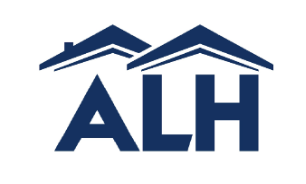Title Page
-
Company name
-
Location
-
Type of business
-
Company representative (name and title)
-
Conducted on
-
Prepared by (name and title)
Introduction
Scope
-
The scope of this evaluation was confined to the examination of observations made during the client site visit. The primary objective of this report was to assess the work environment in which our labour hire workers will be placed, to determine the safety and suitability of these conditions for their placement.
Confidentiality Statement
-
In order to maintain the integrity and credibility of the risk analysis processes and to protect the parties involved, it is understood that our company and its representatives will not divulge to unauthorised persons any information obtained during this WHS Evaluation unless legally obliged to do so.
Copyright 2024
-
All rights reserved. No part of this document may be reproduced or transmitted in any form by any means, electronic or mechanical, including photocopying and recording, or by an information storage or retrieval system, accept as may be permitted, in writing, by the company.
Site Evaluation
General housekeeping and environment
-
1. Is there access to adequate amenities and facilities? i.e., access to shade during breaks, somewhere to eat their food away from workplace hazards, food storage, drinking water, toilets, and handwashing facilities during work. TIP: take a photo of the facilities, or explain in the notes what you observed at the time of the visit. NOTE: Where work is carried out on a temporary site, describe in the notes the amenities that are provided, and how workers can easily access these.
-
2. Is there adequate lighting and ventilation to safely perform the work? TIP: take a photo of the work areas where your workers will be working, or explain in the notes what you observed at the time of the visit.
-
3. Are floors, stairs, and surfaces designed, installed, and maintained for the tasks being undertaken, and do not present a risk to health and safety? TIP: take a photo of floor surfaces, and stairs, or explain in the notes what was observed at the time of the visit.
-
4. Are the risks associated with extreme temperatures effectively controlled? Please consider the work tasks performed, the working environment, and the temperature when assessing the controls in place. TIP: take a photo of temperature controls used at the site e.g., site sheds for workers to sit under during breaks, industrial fans. Explain these controls in the notes.
-
5. Are first aid kits available at the workplace, including in work vehicles, and suitably trained first aiders on all shifts (provide details of first aid arrangements)? TIP: take a photo of first aid kits in vehicles and in the workplace, or explain in the notes where kits are located, and the type of kits available.
Information and Instruction
-
6. Are emergency contact details readily accessible to workers, and is signage displayed to indicate the location of the emergency assembly point and first aid kits TIP: Take a photo of emergency contact details, emergency assembly point and first aid signage.
-
7. Where is the nearest medical clinic/facility? TIP: provide the name and location of the nearest medical facility.
-
8. Are workers provided with information on an Employee Assistance Program and/or mental health support contact details? TIP: take a photo of the EAP or mental health support contact information provided to workers, or explain in the notes how workers are informed of mental health support available to them.
-
9. Is there easy on-site access to Safe Work Method Statements (SWMS) / Safe Work Procedures (SWP) / Safe Work Instructions for workers?
Worksite Hazard Management
Plant + Mobile Plant + Tools + Equipment
-
1. Are reasonable steps taken to ensure that all health and safety features and warning devices (including guarding, operational controls, emergency stops and warning devices) are used on plant, tools and equipment?
-
2. Is there a documented traffic management plan in place, and various traffic management controls implemented, such as physical bollards, line marking, gates, warning alarms, and speed limits? TIP: take a photo of the traffic management plan document, and traffic management controls used at the site or explain in the notes what you observed at the time.
Asbestos
-
3. Are there measures implemented to mitigate the risks of asbestos exposure, such as visible warning signs, a maintained asbestos register, readily available Asbestos Management Plans, and licensed asbestos removalists? TIP: take a photo of the asbestos risk controls used at the site or explain in the notes what you observed at the time.
Confined Space
-
4. Are confined spaces identified and clearly signposted? Note: A confined space in refers to an enclosed or partially enclosed space not primarily for human occupancy, at atmospheric pressure, that poses risks due to harmful airborne contaminants, unsafe oxygen levels, or engulfment. These typically include pits, silos, vats, pipes, and tanks. TIP: take a photo of the confined space signage or explain in the notes what you observed at the time.
-
5. Are there 'permit to work' systems implemented for working within confined spaces? TIP: take a photo of the confined space signage or explain in the notes what you observed at the time.
Crystalline Silica
-
Note: When you do things like cut, grind, drill or polish products that contain crystalline silica, it releases very fine dust. Some of the dust is so small you may not be able to see it. Workers in industries like stonemasonry, construction and the extractives industry may be exposed to crystalline silica dust. Benchtop fabrication workers are at higher risk, because they regularly work with reconstituted stone.
-
6. Are measures in place to control the risk of crystalline silica exposure, like using water-suppressed tools, on-tool extraction systems, and appropriate respirators?
Electrical + Powerlines + Radio Frequency
-
7. Is the electrical equipment in visible good condition and currently tested and tagged? TIP: take a photo of the electrical equipment and cables in areas where tasks will be performed by workers. Capture a clear image of the tag showing both the last test date and the next scheduled test. Alternatively, provide a detailed observation in the notes.
-
8. Is there a process in place to ensure a safe distance from overhead powerlines is maintained (i.e. exclusion zones, markers on powerlines, site map of powerlines)? TIP: take a photo of the powerline site map and the risk controls in place to prevent contact with powerlines, or explain in the notes what you observed at the time of the visit.
-
9. Is there a process in place to ensure safe levels of exposure to RF radiation are maintained (i.e., exclusion zones, RF hazard signage, and RF exposure site maps)? TIP: take a photo of the RF exposure site map and the risk controls in place to prevent overexposure to RF radiation, or explain in the notes what you observed at the time of the visit.
Excavation
-
10. Is there a process in place to ensure a safe distance from underground services is maintained (i.e. No Go Zones? TIP: take a photo of the risk controls in place to prevent contact with underground services, or explain in the notes what you observed at the time of the visit.
Falling Objects
-
11. Are loads secured to prevent them from falling from one level to another e.g., isolation/no-go zones, fall prevention, fall arrest systems, PPE, signage? TIP: take a photo of objects stored or moved at height that could potentially fall on a worker, and the risk controls in place to prevent the fall e.g., secure racking systems, netting, restraining bars, or explain in the notes what you observed at the time of the visit.
Falls (working at heights)
-
12. Are specific control measures are in place to manage the risks associated with falls? i.e., temporary work platforms, guardrails, fall arrest systems, etc. TIP: take a photo of the work areas where workers will need to work at heights, and the controls in place to prevent falls e.g., guardrails, or explain in the notes what you observed at the time of the visit.
Hazardous Chemicals
-
13. Is there a register of all hazardous chemicals and are Safety Data Sheets available for hazardous chemicals workers are exposed to? TIP: take a photo of the hazardous chemicals register, and a sample of Safety Data Sheets, or explain in the notes where the register and Safety Data Sheets are located, and if they are accessible to workers.
Manual Tasks
-
14. Are measures in place to minimise the risks associated with manual tasks? e.g., work area design and layout, availability of mechanical aides, adherence to weight limits, ensuring comfortable working surface heights, job rotation, and introducing variety to reduce repetition and static postures. TIP: take a photo of any aides used to control the risk, or explain in the notes what you observed at the time of the visit.
Noise
-
15. Are effective measures in place to control noise exposure, such as using noise-reducing equipment, implementing sound barriers, and providing appropriate hearing protection? TIP: take a photo of any controls in place to manage noise exposure, or explain in the notes what you observed at the time of the visit.
Outdoor Work
-
16. Are precautions in place to manage the risks associated with outdoor work, such as provisions for sun protection, adequate hydration measures, and controls for weather-related hazards? TIP: take a photo of any controls in place to manage exposure to outdoor risks, or explain in the notes what you observed at the time of the visit.
Water Safety
-
17. Are precautions in place to manage the risks associated with working near water, such as barriers, safety equipment, and training for water-related hazards? TIP: Take a photo of any controls in place to manage exposure to water hazards, or explain in the notes what you observed at the time of the visit.
Remote Work
-
Are communication systems readily available and easily accessible to ensure effective remote work, including reliable internet connections, communication devices, and support for troubleshooting? TIP: Take a photo of any communication systems in place, or explain in the notes what you observed during the walkthrough.
Next Review
-
Next review date Note: the review date is 12 months from the date the site assessment was completed.
-
Set a reminder for the review in JobAdder
Summary
-
Will we proceed with placement?
-
Explain the reasons why we will not proceed with placement.
















